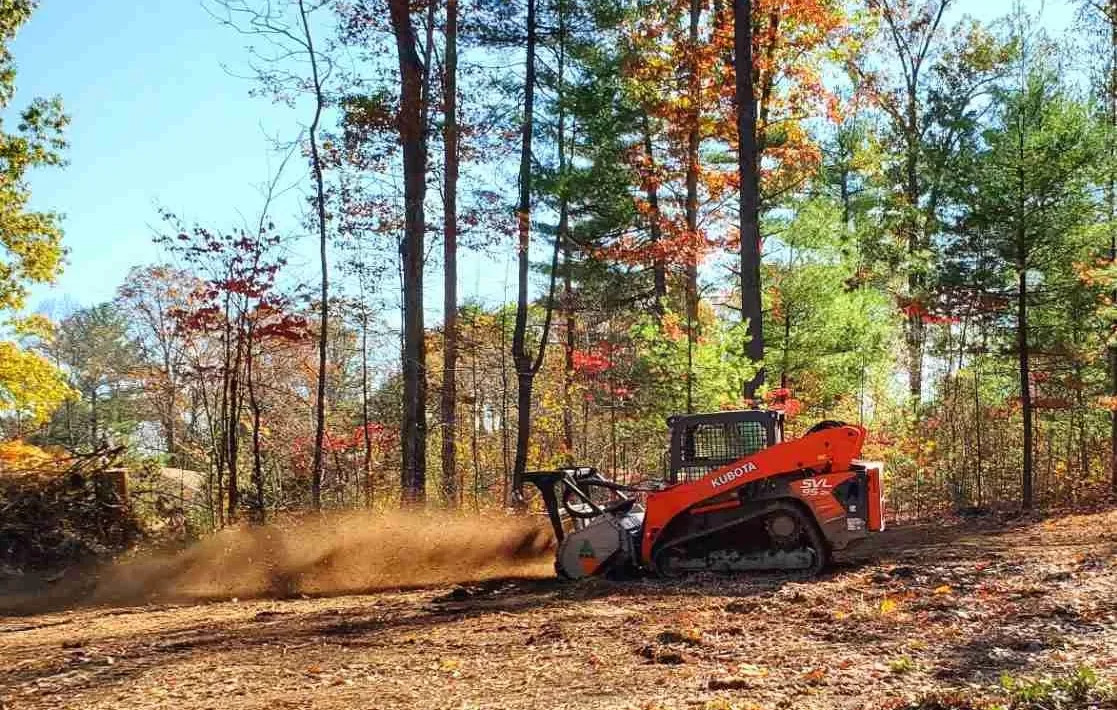Forestry mulching, an innovative land management technique, is rapidly gaining popularity among landowners, environmentalists, and agricultural enthusiasts. This method employs a single machine to cut, grind, and clear vegetation, is efficient and eco-friendly. Today, we dive into the myriad benefits of this remarkable land management strategy, revealing why it’s such a valuable tool for diverse landscapes.
Table of Contents
Improved Land Productivity
Forestry mulching in Manassas revitalizes the soil by returning organic material back to the earth. As the mulcher grinds vegetation, it creates a layer of mulch that enriches the soil with nutrients. This process encourages plant growth and promotes an overall healthier ecosystem.
Time and Cost Efficiency
Forestry mulching requires fewer machines and less manpower than traditional land clearing methods. It allows simultaneous cutting, grinding, and clearing of vegetation, significantly reducing the time and costs associated with land management. This efficiency extends to fuel and maintenance expenses, as you operate one machine instead of multiple.
Soil Erosion Control
The layer of mulch produced during forestry mulching is beneficial for the soil beyond nutrient enrichment. It acts as a protective barrier, preventing soil erosion caused by wind and rain. This aids in maintaining the integrity of the landscape, preserving its aesthetic and practical value.
Wildlife Habitat Protection
Forestry mulching is less disruptive to wildlife habitats than traditional land clearing methods. It selectively clears vegetation and leaves a balanced ecosystem where wildlife can thrive. It’s a method that truly harmonizes human needs with nature’s well-being.
Mitigating Wildfire Risk
By removing underbrush and dead vegetation, forestry mulching reduces the fuel available for potential wildfires. The mulch layer left behind is less flammable, decreasing the likelihood of fires spreading rapidly. This is a particularly vital benefit in regions prone to wildfires.
Enhanced Accessibility
Forestry mulching can create trails and access points across various landscapes. Whether for recreational activities like hiking and hunting or for practical purposes like property surveying, this method provides a low-impact solution for improving land accessibility.
Promoting Biodiversity
Forestry mulching encourages biodiversity by creating a diverse structure in the vegetation. By selectively clearing areas, different species of plants get the opportunity to thrive. This varied environment, in turn, supports a wider range of animal species.
Disease and Pest Control
Healthy, well-maintained vegetation is less susceptible to diseases and pests. Forestry mulching promotes plant health, reducing the likelihood of disease spread. The mulch layer also serves as a barrier, reducing the ability of pests to establish themselves.
Conservation of Water Resources
Forestry mulching helps conserve water resources by reducing evaporation from the soil surface. The mulch layer retains moisture, providing a conducive environment for plant growth even during dry periods. This is especially beneficial in areas prone to drought.
No Need for Burn or Haul Offs
Traditional land clearing often involves burning or hauling off vegetation, which can have environmental implications and additional costs. This is not a concern with forestry mulching as the vegetation is ground on-site and left as nutrient-rich mulch.
Improved Aesthetics
The end result of forestry mulching is a clean, visually appealing landscape. It enhances the look of your property without the unsightly piles of debris often left behind by traditional land clearing methods. This can increase property value and aesthetic appeal.
Soil Temperature Regulation
The mulch layer produced by forestry mulching also helps regulate soil temperature. Providing a shield from harsh sunlight keeps the soil cooler during the summer. During the winter, it acts as insulation, preserving warmth in the soil.
Enhancing Soil Structure and Fertility
The mulch layer improves the soil structure, enhancing its capacity to retain water and nutrients. It also promotes the activity of beneficial soil organisms like earthworms, which further improve soil fertility. Over time, these benefits result in more robust and resilient landscapes.
Forestry mulching offers many benefits that cater to a diverse range of needs and goals.










